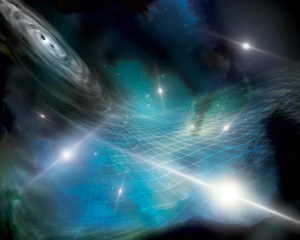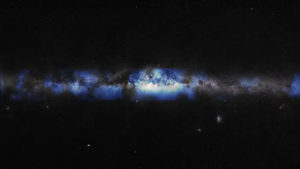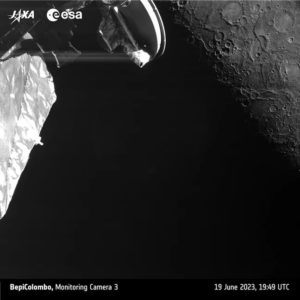June graced us with two beautiful news from the skies. Which actually aren’t only about space; but about space x relativity in one case and space x elementary particles in the other. Because, the universe as one, bitch.

Astronomers detected an ocean of gravity ripples bathing everything in the universe
Okay, officially it’s called gravitational waves background, but yes, it’s like the backdrop of noise gently encompassing our daily activities. Only that it is ripples of gravity and they encompass everything that there is. And they are so low-bass that each ripple extends to a distance larger than the solar system’s size.
That extreme bass-ness explains why they weren’t detected earlier, and why they needed something more special than the standard grav waves detectors (the ones that have been customarily “hearing” collisions of black holes for a few years now).
First things first, where do these waves of gravity come from? Most probably from collisions between supermassive black holes, meaning holes that can weigh billions of times the Sun. And they were kind of expected, as cosmologists had already calculated the ripples this would cause on spacetime. (Gravity being basically spacetime distortion, as described by the theory of general relativity, and that’s where the reference to relativity in the intro came from.)
So, having this grav backdrop throughout the heavens was reasonably expected to happen, but again, it is so bass that each wave, crest to crest, can extend to distances of light years. Which means they can’t be seen as quick spikes in the ultra-sensitive experiments that can detect shorter grav pulses.
And that’s where our friends the pulsars come in. You know, the compact spheres of extinguished stars that spin incredulously fast and serve us as flashing cosmic clocks in the skies. Their flashes aren’t just so precise that they can be used in galactic maps; they are so precise that faint bass grav waves spreading out to light years will actually perturb their beat. Well, as long as you have sensitive enough ears to hear this perturbation.

And that’s where our friend the NANOGrav project comes in. NANOGrav is the name of a group of folks using radiotelescopes from around the world and patiently analyzing years’ worth of their data (15 years’ so far, to be precise). Their goal? You guessed it — seeing the precise pulsar beats get gently shaken by disturbances so uniform and long that they can only be the result of supermassive black holes bumping into each other in galaxies half a universe away. And all their effort seems to be paying off, as they just announced strong evidence of what they set out to find, and will keep going strong till they have enough data to be perfectly sure about it.
The Milky Way, seen in something other than light
In a move evoking summertime beverages, the Milky Way and the IceCube combined to bring us goodness.
In this case the IceCube is a respected experiment that uses a cubic kilometer of underground Antarctica ice to study neutrinos — the weird subatomic particles that pass through our bodies and actually through the whole of Earth by the zillions without stopping. (For a quick acquaintance with both neutrinos and IceCube, see another recent post involving their common history.)
IceCube is looking specifically for neutrinos from space, which are even harder to pinpoint — as most neutrinos come from our own atmosphere, from cosmic rays crashing into good old air particles. But in their new analysis, this is what IceCubers did on the backlog of their last ten years’ data. The result was twofold: Being able to say that some of the neutrinos originate from actually the Milky Way, and also creating the first ever picture of the Way’s central disk in neutrinos.

As one of the IceCubers neatly put it, “Now we see, for the first time, our galaxy in something other than light”. Stay tuned for more neutrinos and sharper images in the next years, as the era of multimessenger astronomy is getting stronger by the day.
Life is tough; have a close-up photo of Mercury’s terminator
Taken by spacecraft Bepi-Colombo as it maneuvres to get in orbit around the planet. (Ahem, terminator.)

—
Do you want to receive one monthly reminder with links to the Ph-word posts? Join the mailing list.
